The week at a glance
- Sandhill Crane in Northumberland, Durham, Cleveland, North Yorkshire, Lincolnshire, Norfolk and Suffolk
- Solitary Sandpiper in Lancashire, Jersey and Isles of Scilly
- Semipalmated Plover still in Kerry
- Possible (Southern) Little Shearwater in Gwynedd
- Siberian Blue Robin found dead in Shetland
- Northern Waterthrush and possible Wilson's Snipe on Isles of Scilly
- Blyth's Pipit in Durham and Cleveland
- Buff-bellied Pipit and Pallas's Grasshopper Warbler in Shetland
- Black Scoter still off Aberdeenshire
- American Black Tern still in Lincolnshire
- House Crow still in Cork
Once it left Aberdeenshire last week, it was perhaps only a matter of time before the Sandhill Crane was relocated on its travels. It was first seen heading south past Newbiggin-by-the-Sea (Northumberland) on 29th and there then followed a wild goose (or crane) chase along the east coast. Over the next five hours it was picked up at no fewer than nine sites in Northumberland, Durham, Cleveland and North Yorkshire, before being last seen heading high west from Whitby (North Yorks). There was then a late report of it heading south past Rimac (Lincs) at midday on 1st and it was then seen heading south over Kessingland (Suffolk) on 2nd. It settled for just 15 minutes at North Warren (Suffolk) before continuing south. It stayed in the county and was then relocated at Sudbourne Marshes before finally settling at Boyton Marshes on 2nd–4th. It made a further half-hearted attempt at continuing south on 4th, being seen at Bawdsey and Shingle Street, but returned to Boyton until the end of the week. Lincolnshire to Suffolk obviously takes in Norfolk at some point, and a bird photographed at Snettisham at 1pm on 1st was identified days later as this bird, much to the frustration of Norfolk birders. Interestingly, there was also a report of an unidentified crane with Pink-footed Geese at Tresta, Fetlar (Shetland) on 5th.
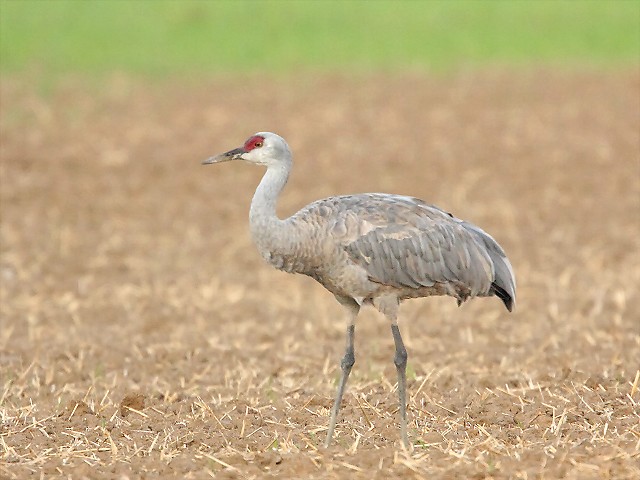
Sandhill Crane, Boyton Marshes, Suffolk (Photo: Chris Mayne)

Sandhill Crane, Boyton Marshes, Suffolk (Photo: Phil Wallace)
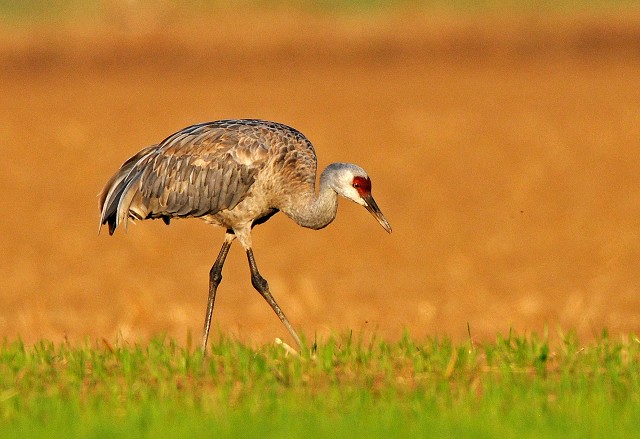
Sandhill Crane, Boyton Marshes, Suffolk (Photo: Jon Evans)
Sandhill Crane, Boyton Marshes, Suffolk (Video: SWlondonbirder)
One intriguing possible was a (Southern) Little Shearwater seen distantly off Bardsey (Gwynedd) on 4th. This species may be unfamiliar, not least due to the confusion over vernacular names and recent changes in taxonomy. The southern ocean taxa are now generally considered a 'good split' from North Atlantic Little Shearwater, which is the only 'Little Shearwater' currently on the British or Irish list.
In Ireland, the juvenile Semipalmated Plover remained at Ventry (Kerry) to 2nd. One of the best new arrivals of the week was a Solitary Sandpiper at Nateby (Lancs) on 2nd–5th, the first record for the county. Jersey's first Solitary Sandpiper also remained, at St Ouen's Pond to 4th, and the bird on St Mary's (Scilly) also stayed put, frequenting the same pool as the Northern Waterthrush and a Lesser Yellowlegs. The waterthrush also remained all week and kept to its routine of showing well in the mornings. Its whereabouts remained unknown for much of the remainder of the week, but it did turn up in a mist net at Porth Hellick on 1st. The only other mega on the archipelago was a possible Wilson's Snipe at Porth Hellick on 4th–5th.

Semipalmated Plover, Ventry, Kerry (Photo: Ronan McLaughlin)

Solitary Sandpiper, Nateby, Lancashire (Photo: Graeme Risdon)
Northern Waterthrush, Solitary Sandpiper and Lesser Yellowlegs, St. Mary's, Isles of Scilly (Video: benjimi1)
Following the rapid departure of the Weir Wood Reservoir Long-toed Stint, an odd-looking "Temminck's Stint" at Idle Valley NR (Notts) on 28th–29th caused some discussion. Again it was originally thought to perhaps be a Least Sandpiper, but was then considered by many to be another, or the same, Long-toed Stint. Despite varying degrees of confusion and lack of news one way or another, it now seems that this bird was in fact another Little Stint.
There were two interesting flight records of Blyth's Pipit this week, over Whitburn Coastal Park (Durham) on 2nd and one heard calling over Middlesbrough (Cleveland) on 3rd. Both would be first county records, but flight ID of this tricky species is never going to be easy. Just one Buff-bellied Pipit remained, on Foula (Shetland) to 29th. The island was also home to a sorry tale. After last autumn's Rufous-tailed Robin on North Ronaldsay (Orkney), another eastern mega was found dead on the Northern Isles this week. Almost a year to the day later, a Siberian Blue Robin met its end in the jaws of Paddy the cat on Foula (Shetland) on 1st. There are just three previous records of this still mythical vagrant: on Sark in October 1975, at Minsmere (Suffolk) in October 2000 and on North Ronaldsay in October 2001.
Fair Isle didn't miss out this week, with the first Pallas's Grasshopper Warbler of the year on 30th. It showed well to those on the island in typical scurrying style. The Fair Isle week also saw Blyth's Reed Warbler, three Little Buntings, Citrine Wagtail, Olive-backed Pipit, Richard's Pipit, Melodious Warbler, two Barred Warblers, 15 Yellow-browed Warblers, Red-breasted Flycatcher, Rose-coloured Starling and a day count of 496 Redwings. 'PG Tips' is a classic Shetland vagrant, with 34 of the 43 accepted records to the end of 208 coming from the islands, 20 of them on Fair Isle.
Of the long-stayers, the drake Black Scoter off Blackdog and Murcar (Aberdeenshire), the American Black Tern at Covenham Reservoir (Lincolnshire) and the House Crow in Cobh (Cork) all remained.
A juvenile, unringed, Red-breasted Goose at Saltburn (Cleveland) on 30th moved to nearby Scaling Dam Reservoir on 3rd–5th. The first Black Brant of the winter arrived at Newtownards (Down) on 29th.

Red-breasted Goose, Scaling Dam Reservoir, North Yorkshire (Photo: Chris Downes)
Red-breasted Goose, Scaling Dam Reservoir, North Yorkshire (Video: FoghornsBirdingVideo)
Both of the drake American Wigeon remained, at Wellington Gravel Pits (Herefordshire) to 1st and Loch Bee, South Uist (Outer Hebrides) to 4th. Two Blue-winged Teal also lingered, at Bull Island (Dublin) and Saltholme (Cleveland) to 1st, and there was a new juvenile at Kilcredaun Marsh (Clare) on 29th. The drake Black Duck was still around Achill Island (Mayo) on 1st. Both the drake Ring-necked Duck and drake Ferruginous Duck remained at Chew Valley Lake (Somerset) during the week, and the drake Ferruginous Ducks also remained at Pitsford Reservoir (Northants) to 4th. One at Dinton Pastures/Lavell's Lake (Berks) on 1st–4th was new and a first-winter reported from Lake Lothing (Suffolk) may or may not be the adult drake that was reported last week.
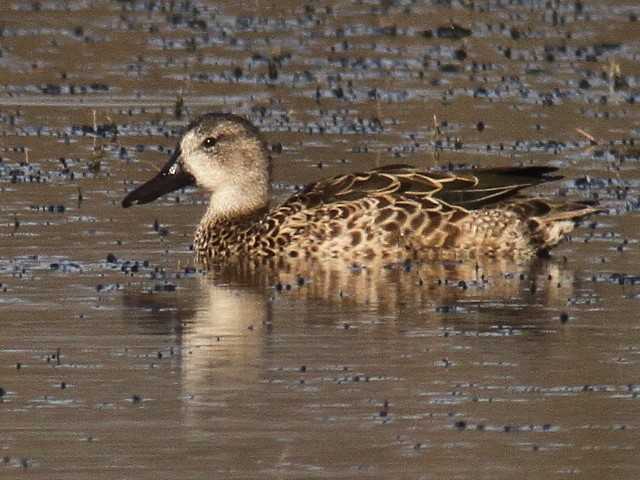
Blue-winged Teal, Saltholme RSPB, Cleveland (Photo: Ian Forrest)
At sea, the eclipse drake King Eider remained in Burghead Bay (Moray & Nairn) to 2nd and there was a possible Northern Eider off Malin Head (Donegal) on 1st. There were two adult drake Surf Scoters: in Burghead Bay (Moray & Nairn) on 2nd and off Ruddon's Point (Fife) on 3rd.
A single Great Shearwater went north past Ness Point, Lowestoft (Suffolk) on 3rd and there was just one report of Leach's Storm-petrel, past Blackpool (Lancs) on 5th. Balearic Shearwaters were again in small numbers, though 64 passed Porthgwarra (Cornwall) on 1st. Numbers of Sabine's Gulls were also well down, with singles reported from just nine sites, including three on the sea off Criccieth (Gwynedd) on 2nd and two juveniles off Musselburgh (Lothian) on 1st. The only Grey Phalaropes reported were one off Benbecula (Outer Hebrides) on 3rd, two off Rubha Ardvule, South Uist (Outer Hebrides) on 4th and one in Dunnet Bay (Highland) on 4th.

Sabine's Gull, Scilly pelagic, Isles of Scilly (Photo: Joe Pender)
Two Great White Egrets remained at Shapwick and Meare Heath (Somerset) and twos were also at Axmouth (Devon) on 29th, Keyhaven Marshes (Hants) on 30th and reported from Cleethorpes (Lincs) on 29th. Singletons were also reported from up to 15 sites as far north as Humphrey Head (Cumbria). The Cattle Egret was again at Thorney Island (West Sussex) to 2nd and another was at Eoropie, Lewis (Outer Hebrides) on 29th. An adult Night Heron was at Shapwick (Somerset) on 4th and another was at Blandford Forum (Dorset) on the same day. There was just one report of White Stork, at Markygate (Herts) on 4th, but this was an escaped bird that was eventually recaptured.
Bang on time, Glossy Ibis started arriving this week, and most were typically in the south and west. Two arrived at Courtmacsherry (Cork) on 2nd and the group there built to 17 by the end of the week. Seven that arrived on the Isle of Wight on 30th dropped to two by the end of the week and may have accounted for the three at Stanpit Marsh (Dorset) on 30th–5th. Two came in off the sea at Boyton Marshes (Suffolk) on 5th, and singletons were also at Kidwelly (Carmarthenshire) on 29th–2nd,the Ogmore Estuary (Glamorgan) on 30th–5th, Sandwell Valley (West Mids) on 1st, Egypt Bay (Kent) on 2nd and Stithians Reservoir (Cornwall) on 4th–5th.
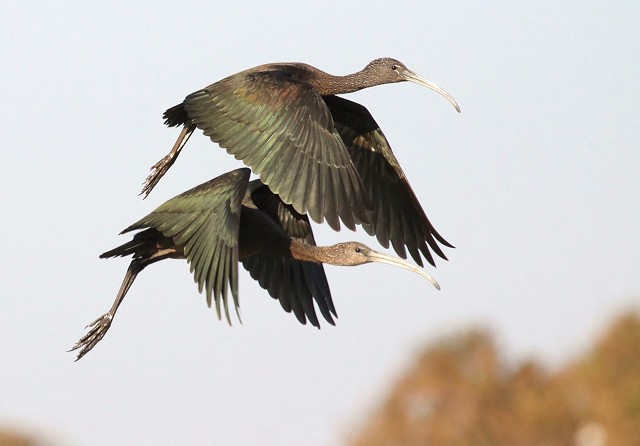
Glossy Ibis, Stanpit Marsh, Dorset (Photo: Lee Fuller)
Three Black Kites remained around Catchall and Drift Reservoir (Cornwall) over the week, and another wandered around St Mary's (Scilly) on 29th–5th. At least three Pallid Harriers remained on Shetland during the week and other Scottish birds, all juveniles, were at Stromness (Orkney) on 1st, the Ythan Estuary and Blackdog (Aberdeenshire) on 1st and Lunan Bay (Angus & Dundee) on 4th. In England, birds remained near Burpham (West Sussex) to 4th and at Black Down (Somerset) to 3rd, and there were again also plenty of new birds. One was on St Agnes, St Mary's, Tresco and Bryher (Scilly) on 29th–2nd and one briefly at Gamlingay (Cambs) and Little Barford (Beds) for 20 minutes on 3rd was the first for both counties. Another potential county first was another juvenile at Rhoose Point (Glamorgan) on 3rd. A further possible juvenile (or Montagu's Harrier) was also at Whisby Nature Park (Lincs) on 4th.

Pallid Harrier, Fetlar, Shetland (Photo: Brydon Thomason)
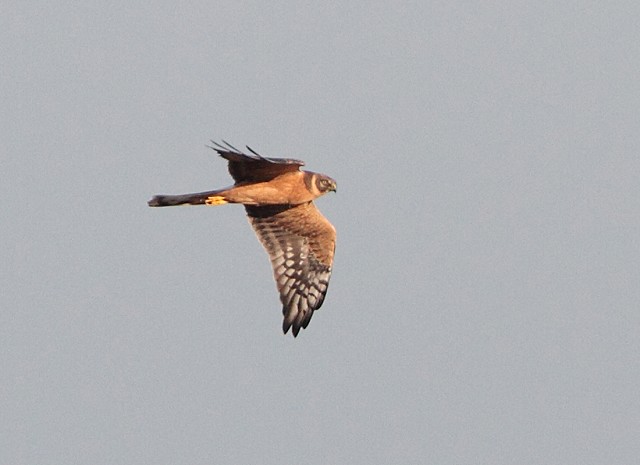
Pallid Harrier, Black Down, Somerset & Bristol (Photo: Kato1)
The only Spotted Crakes reported this week were new birds at Rainham Marshes (London) and Ambleside (Cumbria) on 2nd.
American Golden Plovers were reported from at least nine sites in Ireland. Hebridean birds remained on Barra to 5th (with two to 29th) and at Borve (Lewis) on 4th, and there were three together at Funzie, Fetlar (Shetland) on 30th. The only English birds were juveniles on St Martin's and St Mary's (Scilly) over the week and one at Cottam (East Yorks) on 4th.

American Golden Plover, Bunbeg, Donegal (Photo: Derek Charles)
The Lesser Yellowlegs was at Conder Green (Lancs) to 4th, though was rather elusive and hard to catch up with. In the southwest, others remained at St Clement (Cornwall) to 2nd and on St Mary's (Scilly), and new birds were at Tacumshin (Wexford) on 1st and reported from Hartlepool Headland (Cleveland) on 30th. Another new bird on Great Pool, Tresco (Scilly) on 3rd–5th was in the company of three Pectoral Sandpipers and the third Least Sandpiper for the islands, on 4th–5th. Two of last week's Spotted Sandpipers remained into this week: the juvenile on the Plym Estuary (Devon) and the moulting adult at Chew Valley Lake (Somerset).
Another Great Snipe turned up on Shetland, this time at North Voxter on the evening of 29th, though it wasn't relocated in the morning. The Long-billed Dowitcher at Baron's Haugh (Clyde) stayed to 4th and there was a run of new birds. These were mostly juveniles, at Kidwelly (Carmarthenshire) on 29th–5th, the Lossie Estuary (Moray & Nairn) on 2nd–4th, and in Lincolnshire, where one was at Freiston Shore on 29th–4th and another was reported from Far Ings on 1st.

Long-billed Dowitcher, Freiston Shore RSPB, Lincolnshire (Photo: Paul Neale)
Numbers of Semipalmated Sandpipers were slightly down, but new birds were still being turned up. Records came from nine sites in Ireland (including four on Achill Island (Mayo) and three at Tacumshin (Wexford)), five in England (including just one new bird at Davidstow Airfield (Cornwall) on 3rd–5th), and two in Scotland (at Ythan Estuary (Aberdeenshire) to 4th and at Ardivachar, South Uist (Outer Hebrides) on 4th). Apart from the Scilly bird, the only other Least Sandpiper remained at Carrahane Strand (Kerry) to 2nd.

Semipalmated Sandpiper, Davidstow Airfield, Cornwall (Photo: Steve Turner)
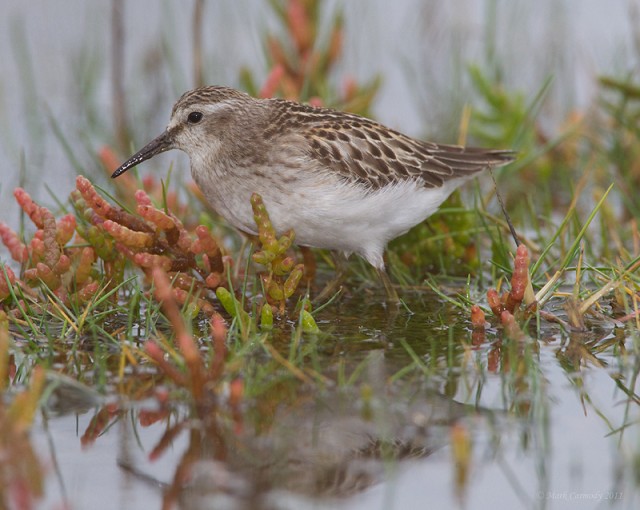
Least Sandpiper, Carrahane Strand, Kerry (Photo: Mark Carmody)
White-rumped Sandpipers were also reported from at least eight sites in Ireland, including two at Trawmore Bay (Mayo) on 30th–3rd and two at Ventry (Kerry) on 2nd. Elsewhere, the only other was an adult at Musselburgh Lagoons (Lothian) on 30th–4th, the first in the county for five years. In Ireland, the Baird's Sandpiper remained at Carrahane Strand (Kerry) to 3rd and new birds were at Ballycotton (Cork) on 1st, Gormanstown (Meath) on 3rd and Inishmore (Galway) on 3rd. In Scotland, one was also at Baile Gharbhaidh, South Uist (Outer Hebrides) on 4th.
Naturally the most widespread of the rarer waders was Pectoral Sandpiper and birds were reported from as many as 50 sites, though fewer are now in Ireland. The most notable groups were six on Great Pool, Tresco (Scilly) on 30th, five on South Uist (Outer Hebrides) on 4th, four at Loch of Huxter (Shetland) on 2nd, three at Butt of Lewis (Outer Hebrides) on 4th and three remaining at Chew Valley Lake (Somerset) to 4th. Other inland birds were at Pugney's Country Park (West Yorks), Idle Valley NR (Notts), Stanford Reservoir (Northants), Fishers Mill (Warks), Weir Wood Reservoir (East Sussex) and Lough Beg (Londonderry). Buff-breasted Sandpipers remained at as many as 21 sites scattered quite widely along all coasts. Most were in the west, but there were also birds at Long Nab, Burniston (North Yorks) on 1st, Whitton Sand (East Yorks) on 1st, Oare Marshes (Kent) on 29th and possibly the same as Elmley Marshes (Kent) on 30th–1st. The largest groups were four on St Mary's (Scilly), four at The Curragh (Kildare) and up to 22 remaining at Tacumshin (Wexford) during the week.

Pectoral Sandpiper, Marazion, Cornwall (Photo: Alex Mckechnie)
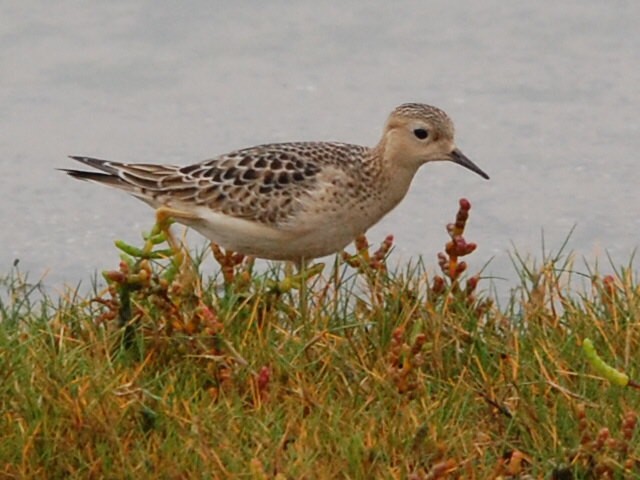
Buff-breasted Sandpiper, Carrahane Strand, Kerry (Photo: Ed Carty)
Glaucous Gulls were once again represented by birds at Dungeness (Kent) and Budleigh Salterton (Devon). Another (or the same?) probable adult Azorean Yellow-legged Gull roosted at Grafham Water (Cambs) on 4th. The second-winter Ring-billed Gull remained on the Teifi in Cardigan (Ceredigion) all week and others were a second-winter at Rathlee (Sligo) on 1st, one at Nimmo's Pier (Galway) on 2nd and adults at Portrush (Antrim) on 3rd and Black Rock Strand (Kerry) on 4th. The only Bonaparte's Gull was an adult at Weir Wood Reservoir (East Sussex) on 3rd; with just one modern county record, this bird proved popular. The only White-winged Black Tern was at Tacumshin (Wexford) on 30th–4th.

Ring-billed Gull, Cardigan, Ceredigion (Photo: Richard Stonier)
On Shetland, a late Alpine Swift was at Laxo on 29th and possibly the same was then at Cunningsburgh and North Voxter on 1st–2nd. More seasonable was a Pallid Swift at Flamborough Head (East Yorks) on 2nd and another or the same was seen at Skegness (Lincs) later the same day. Two new Hoopoes appeared, at Charmouth (Dorset) on 30th–1st and at Hemingford Abbots (Cambs) on 2nd. Numbers of Wrynecks were down slightly, but again all were rather southern. Birds were seen at 21 sites away from Cornwall and Scilly, where numerous birds appeared (including five on St Martin's and two at Lower Moors, St Mary's). Inland birds were at Priorslee Flash (Shropshire) on 30th and at South Chailey (East Sussex) on 1st.

Alpine Swift, Laxo, Mainland, Shetland (Photo: Dougie Preston)

Hoopoe, Charmouth, Dorset (Photo: Robert Kent)

Wryneck, Skomer, Pembrokeshire (Photo: David Astins)
On Scilly, Short-toed Larks were on St Mary's, St Agnes and Tresco, and the only others were on North Ronaldsay (Orkney) still all week and at Tacumshin (Wexford) on 2nd. The Citrine Wagtail remained on Fair Isle to at least 3rd, the island also seeing Bluethroat, Melodious Warbler, two Barred Warblers, 10 Yellow-browed Warblers, Red-breasted Flycatcher, Rose-coloured Starling and two Little Buntings. Other Shetland Citrine Wags were at North Voxter, Quendale and Fleck. The only other Bluethroats were also on Shetland, at Northdale, Unst to 29th and Sandwick on 1st.
Norfolk saw a flush of Richard's Pipits, birds reported from several north-coast sites. Elsewhere, birds were also reported from South Ronaldsay (Orkney), North Gare (Cleveland), Landguard (Suffolk), Porthcurno (Cornwall) and Dursey Island (Cork). There were also two at Noirmont Point (Jersey) on 29th and on North Ronaldsay (Orkney) on 30th. There was just one Tawny Pipit, at Nanjizal Valley (Cornwall) on 1st. The first Olive-backed Pipits of the year arrived this week: apart from one on the Farne Islands (Northumberland) on 1st, the rest were on Fair Isle and Shetland, where birds were present at several sites. There was a mobile Red-throated Pipit at Porthgwarra (Cornwall) on 4th, and another was on North Ronaldsay (Orkney) on 30th. The Observatory also ringed the year's first Pechora Pipit on 1st. This is just the third for Orkney, all of which have been on "North Ron".

Olive-backed Pipit, Baltasound, Unst, Shetland (Photo: Mike Pennington)
The distribution of Red-backed Shrikes remained split, with birds on Shetland and along the south coast from Kent to Scilly. On Shetland the adult Lesser Grey Shrike remained at Laxo (Shetland) to 29th and east-coast Great Grey Shrikes were seen at St Abbs Head (Borders), Cocklawburn Beach and Holy Island (Northumberland) and Kilnsea/Spurn (East Yorks). One of the best new birds of the week was a first-winter Daurian Shrike at Levenwick (Shetland) on 2nd–5th.

Lesser Grey Shrike, Laxo, Shetland (Photo: James Wood)
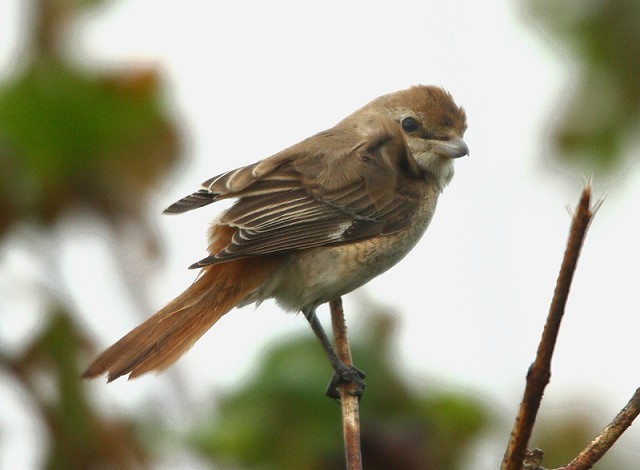
Isabelline (Daurian) Shrike, Levenwick, Shetland (Photo: James Wood)
A Blyth's Reed Warbler was ringed on Fair Isle on 1st and another was finally confirmed on Cape Clear (Cork) on 5th, having been present since 3rd. Apart from the Fair Isle bird, the only Melodious Warbler was in Nanquidno Valley (Cornwall) on 5th. A Western Bonelli's Warbler was finally confirmed at St David's Head (Pembrokeshire) on 3rd. This is just the second county record, following one on Skokholm in August 1948.
Yellow-browed Warblers continued to arrive in numbers along the length of the east coast. In the west, there were two on Anglesey, five in Ireland, one in the Outer Hebrides and several birds on Scilly. Numerous northern sites held two birds and nine were on Holy Island (Northumberland), eight were on St Abbs Head (Borders), eight were at Mire Loch (Borders) and Brough, Whalsay (Shetland), seven were at Uyeasound, Unst (Shetland) and six were at Channerwick (Shetland). There was an inland Arctic Warbler in Ipswich (Suffolk) on 29th.
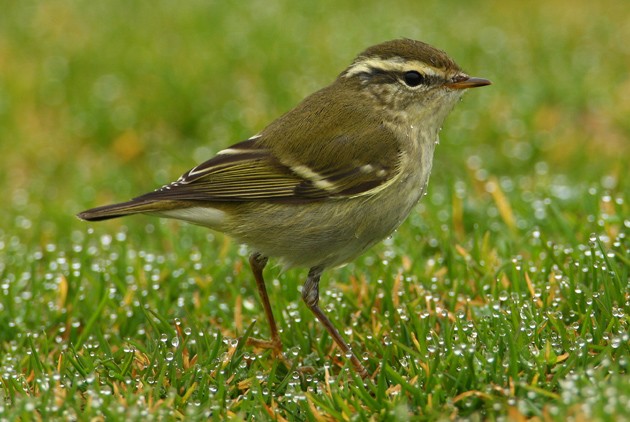
Yellow-browed Warbler, Fair Isle, Shetland (Photo: Steve Arlow)
Barred Warblers remained decidedly northern, with southern birds only reported from five sites, including a popular bird at Holme NOA (Norfolk) to 4th and Irish birds at Brownstown Head (Waterford) on 2nd–3rd and on Cape Clear (Cork) on 3rd. The autumn's first Subalpine Warblers were at Crookhaven (Cork) on 2nd–5th and on St Mary's (Scilly) on 4th. A Central Asian Lesser Whitethroat was at Uyeasound, Unst (Shetland) on 29th and another was at Portland (Dorset) on 3rd. The week's Red-breasted Flycatchers were all at the extremes, with birds in Cork, Antrim, the Outer Hebrides, Orkney and Shetland.

Red-breasted Flycatcher, Ramore Head, Antrim (Photo: Derek Charles)
New Ortolan Buntings were at Rame Head (Cornwall) on 1st, Lundy (Devon) on 2nd–3rd, Dursey Island (Cork) on 3rd, Bolt Head (Devon) on 3rd and Whalsay (Shetland) on 4th. Various Little Buntings also remained on Shetland, with birds at five sites. Further south, birds were also on Barra (Outer Hebrides) on 2nd and St Agnes and St Mary's (Scilly) during the week, and birds were ringed at both Spurn (East Yorks) and Lundy (Devon) on 30th. Numbers and distribution of Lapland Buntings continued to increase, with numerous birds at many east-coast sites. Peak counts included 33 at Butt of Lewis (Outer Hebrides) and along the east coast, six at Donna Nook (Lincs), six on Holy Island (Northumberland), five at Spurn (East Yorks) and four at Carmel Head (Anglesey). The first-winter Black-headed Bunting remained at Belmont, Unst (Shetland) all week and the Red-eyed Vireo also remained at Brevig, Barra (Outer Hebrides) to 30th. Others "REVs" were then at Mizen Head (Cork) on 2nd–4th and at Crookhaven (Cork) on 4th.
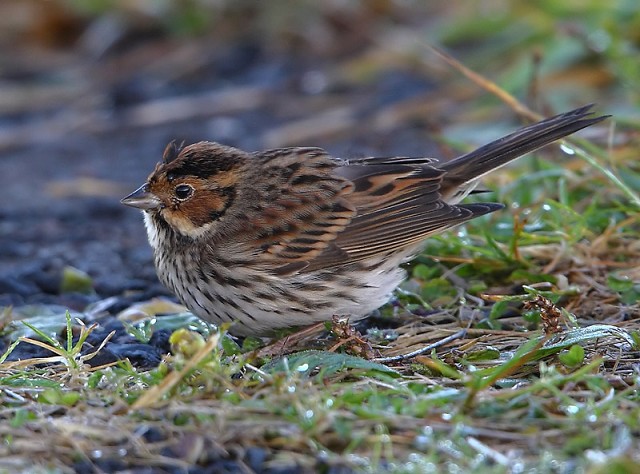
Little Bunting, Geosetter, Mainland, Shetland (Photo: James Wood)

Black-headed Bunting, Belmont, Unst, Shetland (Photo: Mike Pennington)
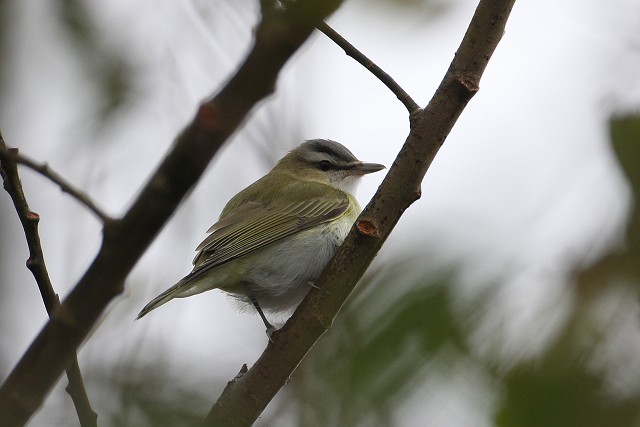
Red-eyed Vireo, Mizen Head, Cork (Photo: Sean Cronin)
Common Rosefinches remained widespread in the Northern Isles, including three at Norwick, Unst (Shetland), while elsewhere there were three in Ireland, two on Scilly and others on Skomer (Pembrokeshire) on 29th and Tiree (Argyll) on 30th. Rose-coloured Starlings remained on Fair Isle to 2nd and at Land's End and Polgigga (Cornwall) to 29th, and two were on Lundy (Devon) to 4th. New birds were on Skomer (Pembrokeshire) on 29th–5th and at Pennington Marshes (Hants) on 2nd–3rd. There were also two at Vazon Bay (Guernsey) on 1st–3rd. The Coues' Arctic Redpoll remained at Urafirth (Shetland) to 29th.

Rose-coloured Starling, Vazon Bay, Guernsey (Photo: Chris Bale)
Photo of the Week: 29th September–5th October

Wilson's Storm-petrel, Portugal (Photo: Mick Southcott)
Bird photographer Mick Southcott has been sending us his images for four years now, mostly from the south and east of England, but also from his trips to other countries. His trip to Hungary earlier this year earned him no fewer than five Notable Images, but his first Photo of the Week comes from his latest trip to Portugal. As he describes in his blog, Mick ended up spending a week in the Algarve taking in a mouth-watering list of 158 species, but his initial plan had been to spend just one day in Portugal so that he could take a particular pelagic trip. Planning to do so much travelling in one day may have seemed crazy, but the images he captured prove otherwise, especially his (and our) favourite image of the collection, which features a beautifully posed Wilson's Storm-petrel. Photos of these tiny birds from the UK tend to be taken in gale force conditions when they are driven inshore, yet Mick's images feature them pattering over glassy-calm water bathed in glorious sunlight. With light reflecting up off the water to illuminate the underside of the bird, Mick has managed to bring out good plumage detail from the banking bird. The chocolate-brown plumage contrasts well with the rich blue backdrop and, as icing on the cake, Mick even captured the yellow webbing of the feet as an accent colour. A great example of what can be achieved if you set your mind to something and then make it happen!
Other notable photos
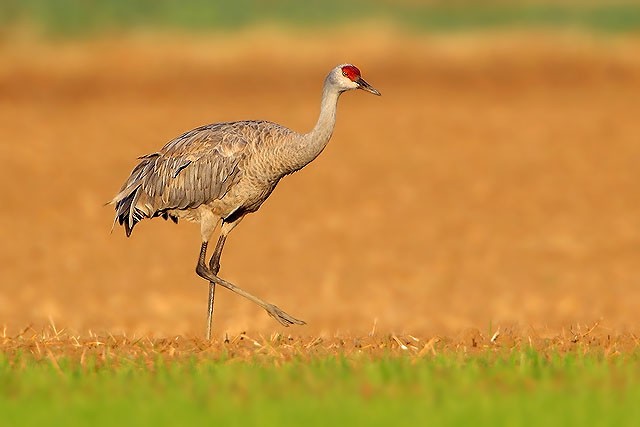
Sandhill Crane, Boyton Marshes, Suffolk (Photo: Kit Day)

Bearded Tit, Minsmere RSPB, Suffolk (Photo: Jon Evans)

Jay, Strumpshaw Fen RSPB, Norfolk (Photo: Tony Belsham)

Black-tailed Godwit, Mistley, Essex (Photo: Chris Upson)
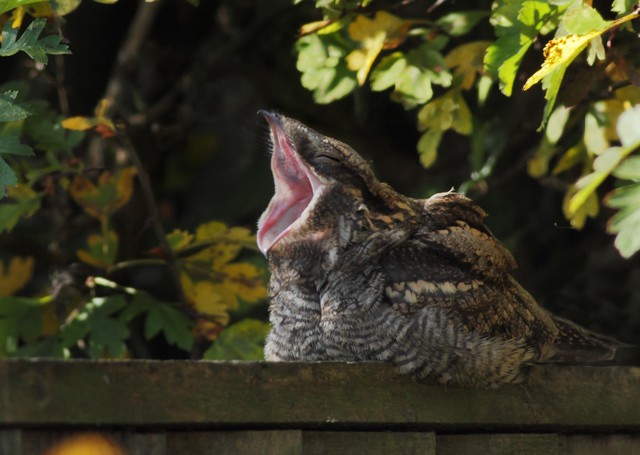
Nightjar, Codnor, Derbyshire (Photo: Steve Whiteley)

Shag, St. Mary's, Isles of Scilly (Photo: Martin Goodey)

Hobby, Qatar (Photo: John A Thompson)

Isabelline Shrike, Dubai (Photo: Jamie MacArthur)

Turnstone, Hythe, Kent (Photo: Brian Harper)

Barn Owl, undisclosed site, Suffolk (Photo: Ian Clarke)

Sparrowhawk, Cleveleys, Lancashire (Photo: Jackie Moreton)

Osprey, Reculver, Kent (Photo: Marc Heath)
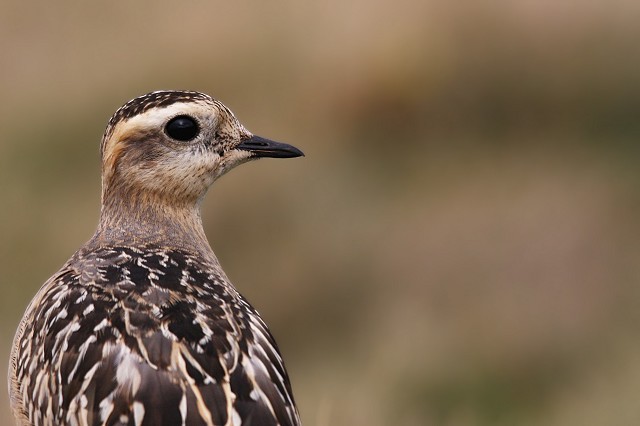
Dotterel, Great Orme, Conwy (Photo: Joe Wynn)
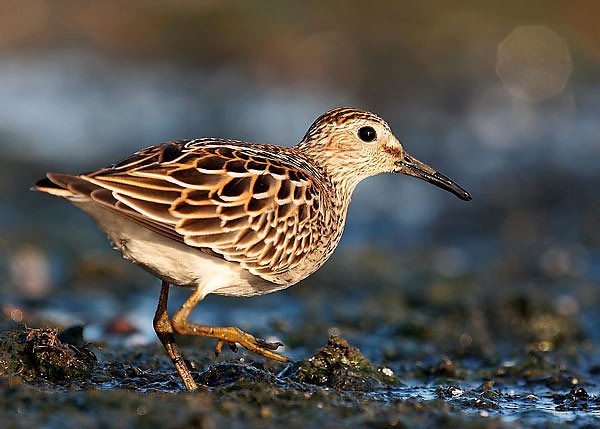
Pectoral Sandpiper, Pugney's CP, West Yorkshire (Photo: Darren Chapman)

Northern Wheatear, Pennington Marshes, Hampshire (Photo: Simon Johnson)

Red Grouse, Long Mynd, Shropshire (Photo: Paul Burgess)

Yellow-browed Warbler, Quendale, Mainland, Shetland (Photo: James Wood)

